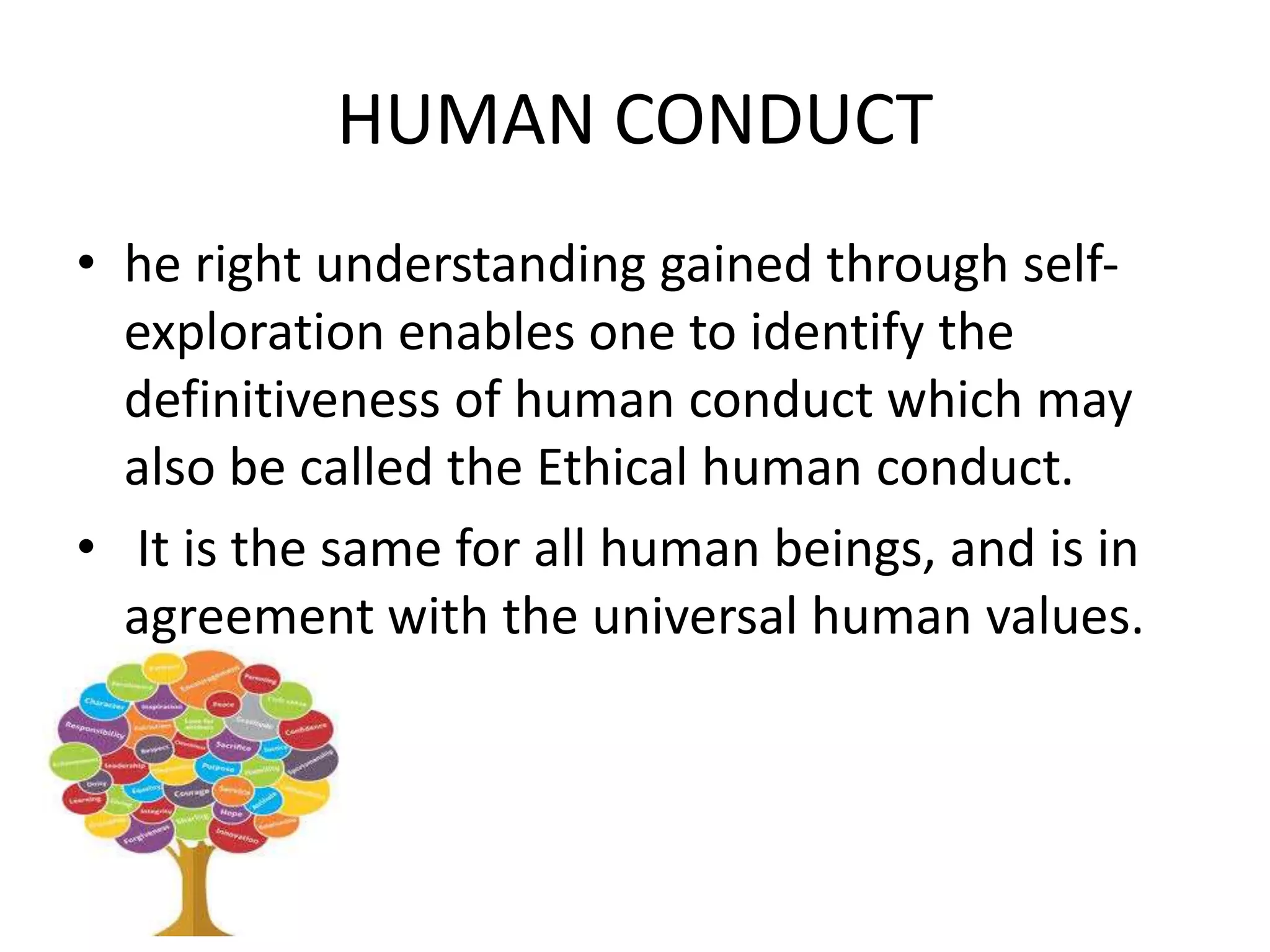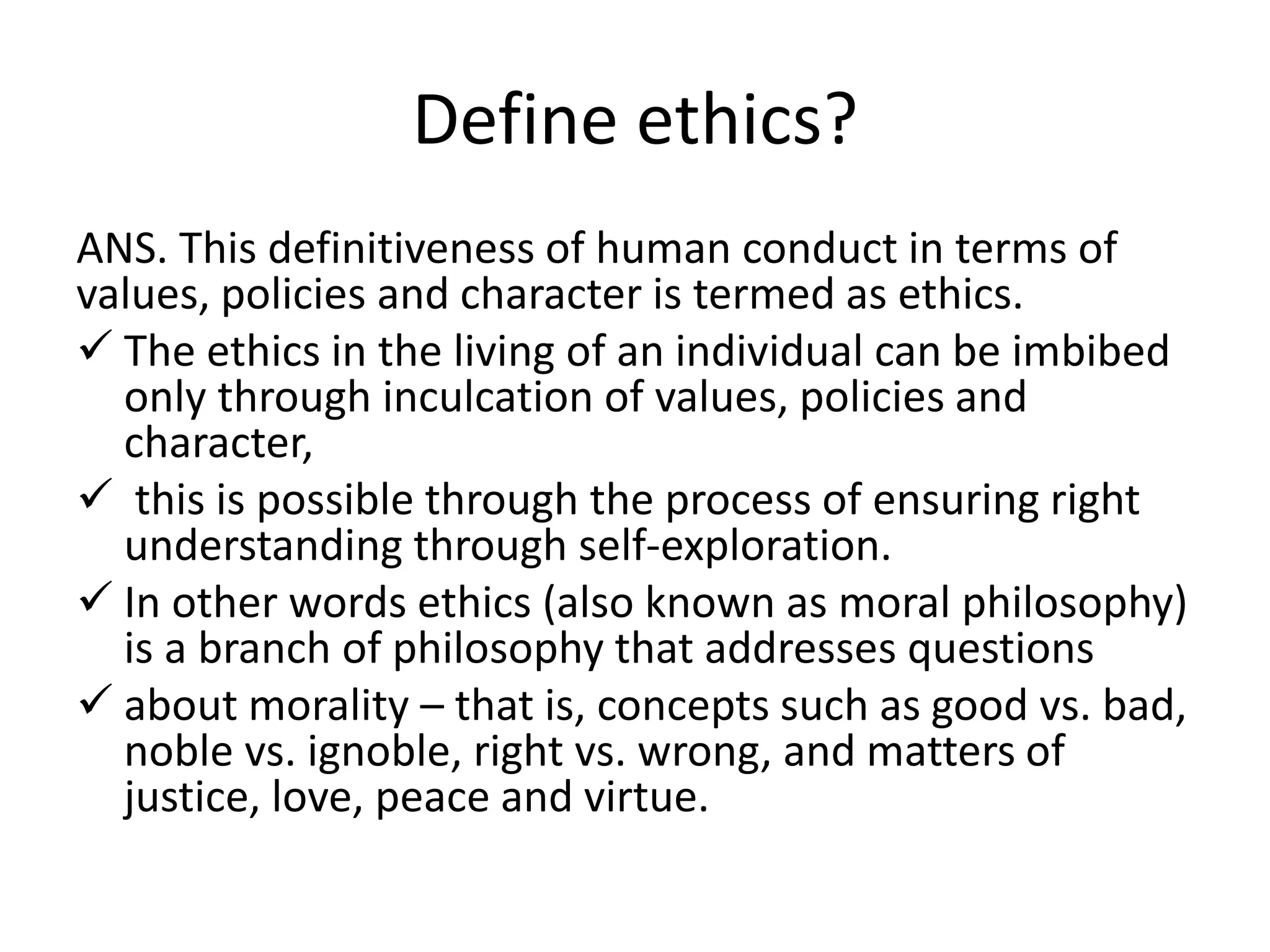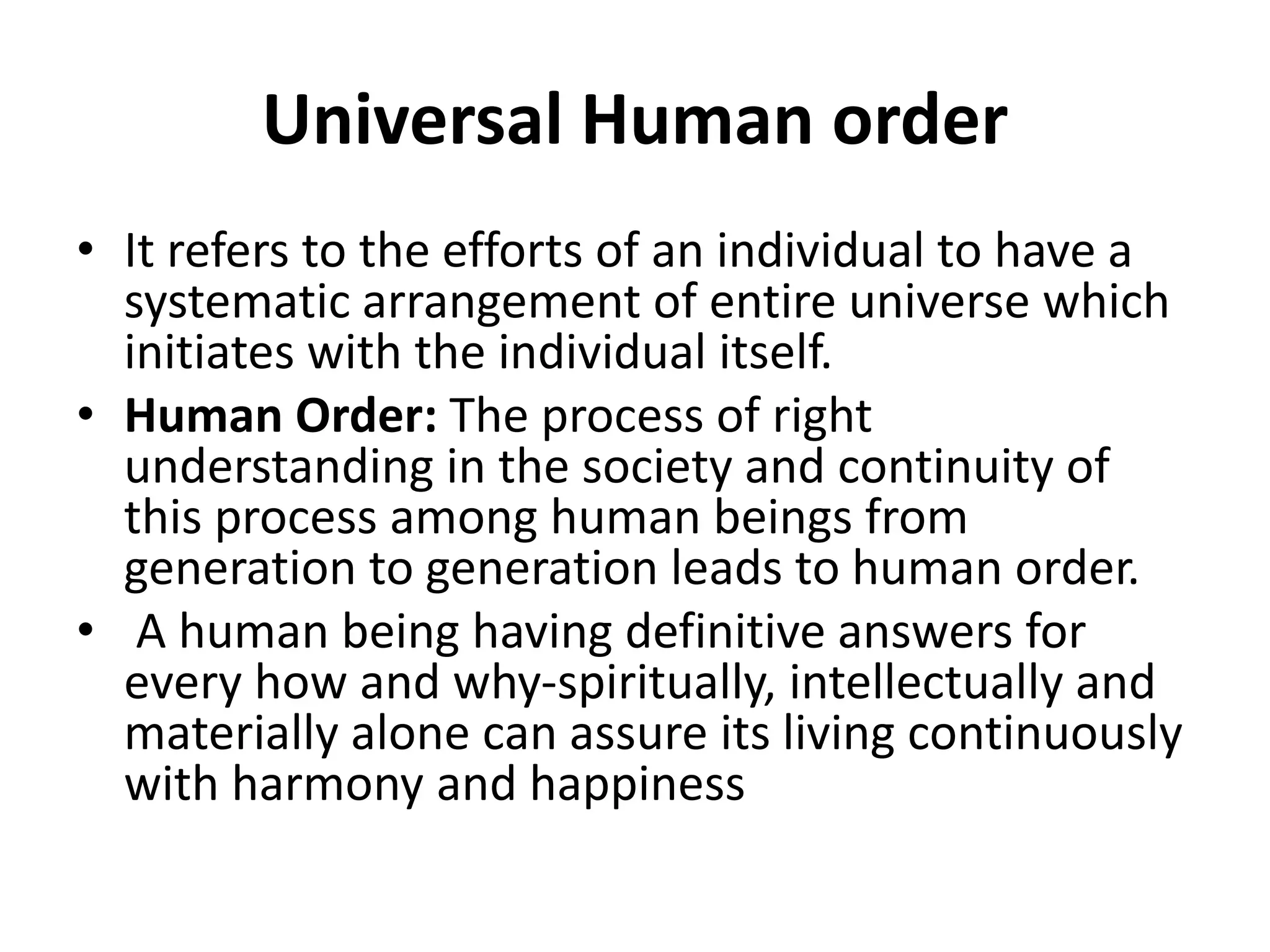This document discusses concepts related to ethics, human conduct, and establishing a universal human order. It defines ethics as addressing questions about morality and matters of justice, love, peace and virtue. It explains that ethical human conduct is based on universal human values, is self-satisfying and people-friendly. Comprehensive human goals are identified as right understanding, prosperity, fearlessness and co-existence. Programs like education, health, justice, production and exchange are discussed in the context of realizing these goals. The concept of universal human order emphasizes a feeling of relationship between all human and other natural entities.




























































































